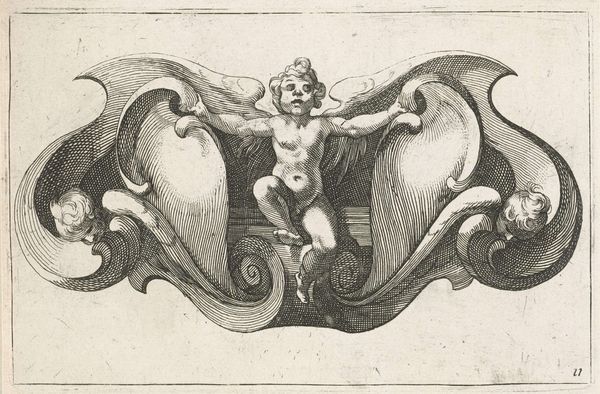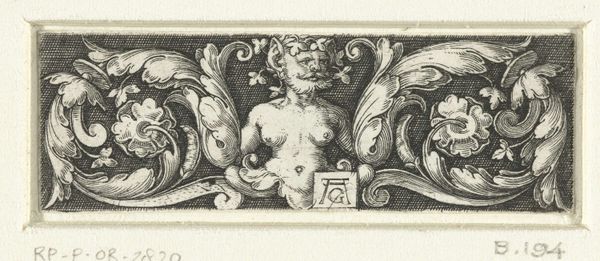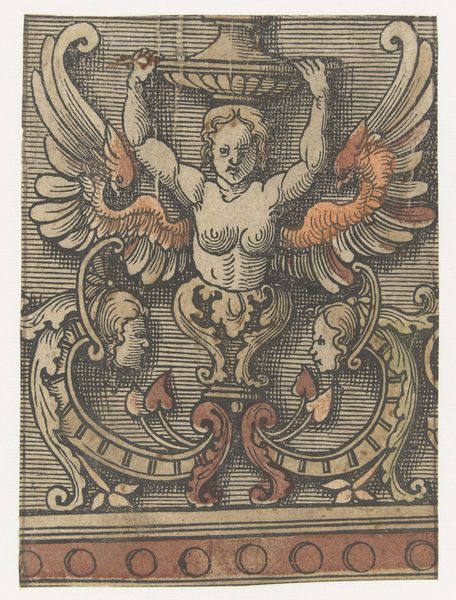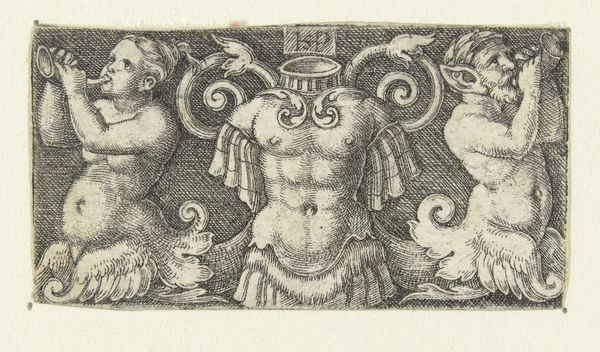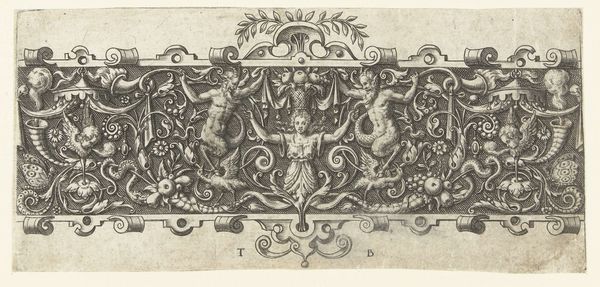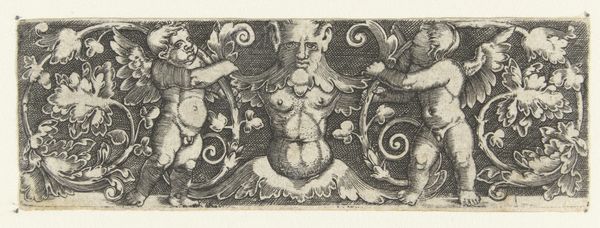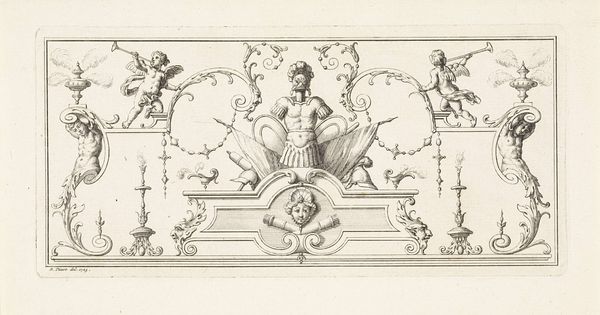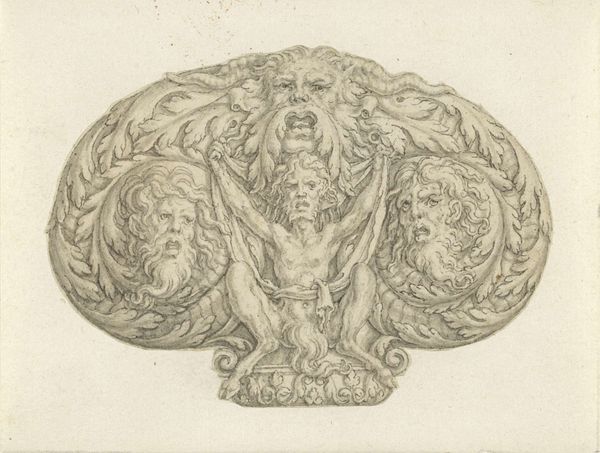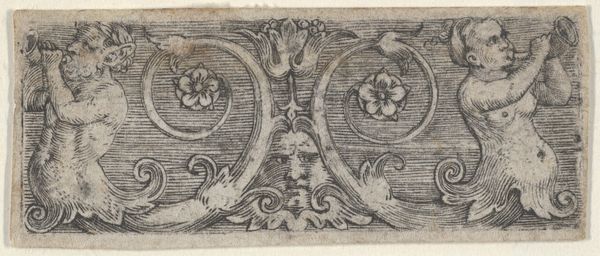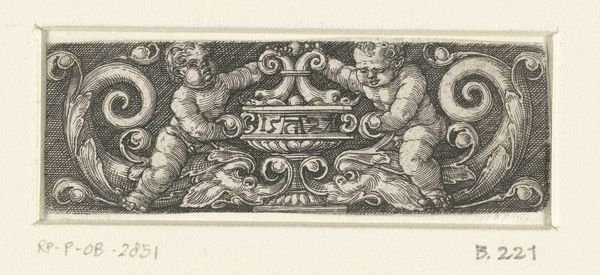
ornament, print, engraving
#
ornament
#
pen drawing
# print
#
pen illustration
#
pen sketch
#
old engraving style
#
figuration
#
11_renaissance
#
pen-ink sketch
#
thin linework
#
line
#
pen work
#
engraving
Dimensions: height 24 mm, width 83 mm
Copyright: Rijks Museum: Open Domain
This small ornament with a winged man was created in the 16th century by an artist known only as Monogrammist AC. It is made using an engraving technique. The image is formed by incising lines into a metal plate, likely copper, with a tool called a burin, then inking the plate to transfer the design onto paper. The fineness of these lines gives the print its delicate detail. We can see this in the intricate floral patterns and the figure, who almost seems to emerge from the background. The hatching effect that creates shadows and volume also speaks to the degree of control required to make this kind of print. Engraving was a highly skilled craft, demanding precision and control. In its time, this kind of print would have been relatively affordable, used for reproduction and dissemination of designs. Ornament prints like this were often used as inspiration for artisans in other media, like ceramics, metalwork, and textiles. So, next time you encounter a design like this, consider the labor, skill, and the wider culture of reproduction that made it possible.
Comments
No comments
Be the first to comment and join the conversation on the ultimate creative platform.

